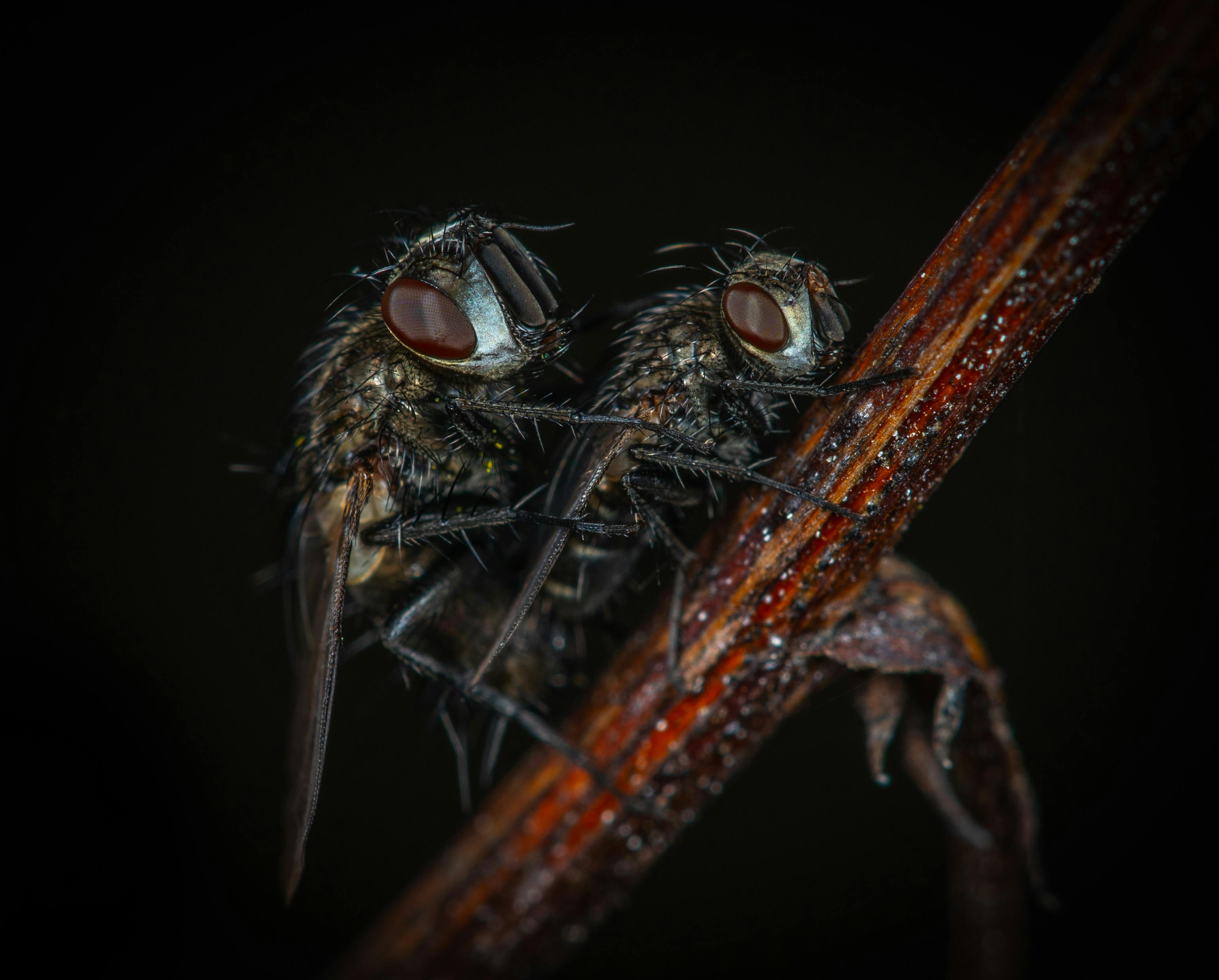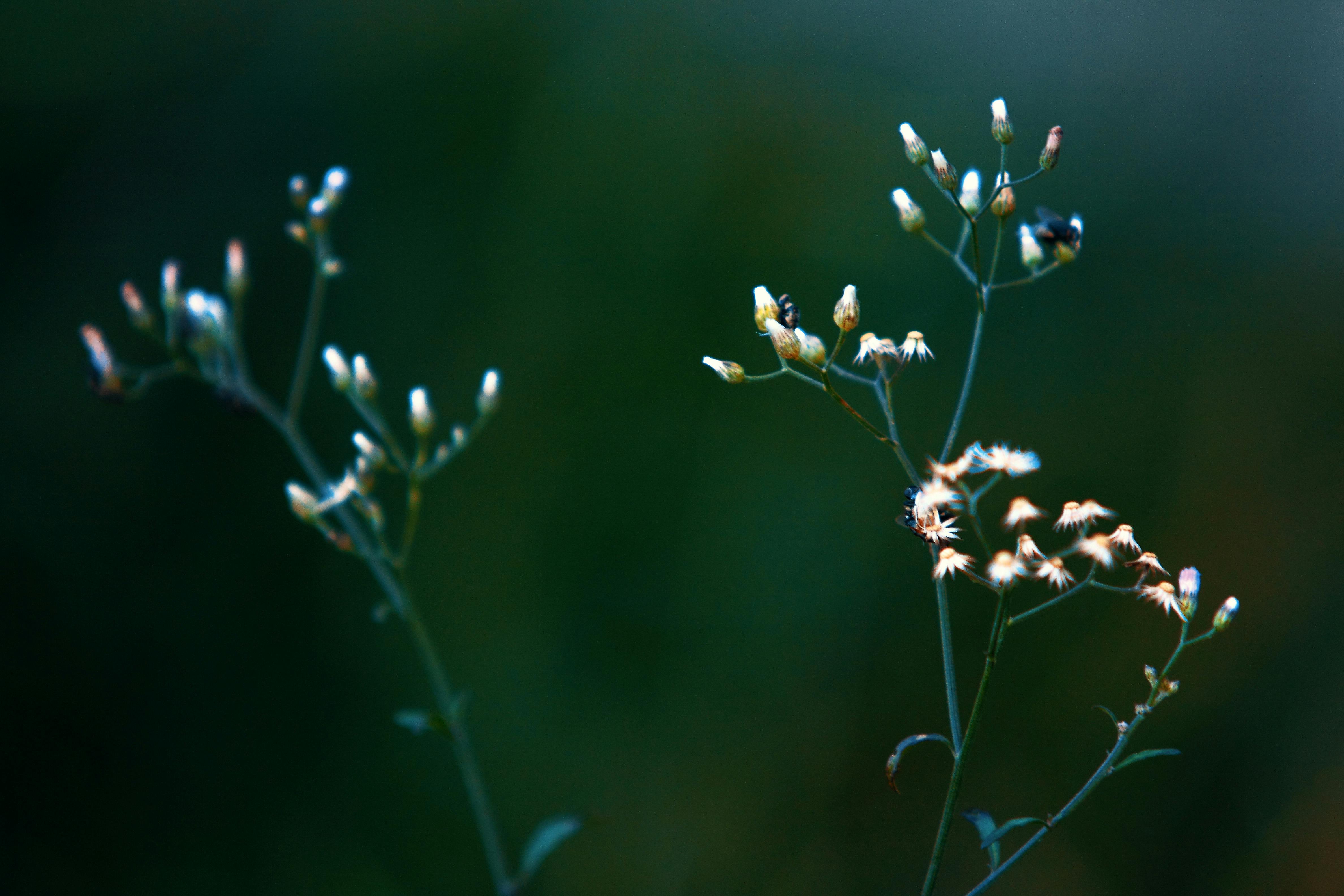Fruit flies and drain flies are both small, flying insects that are commonly found in household settings. While they may appear similar, there are a few key differences between the two types of flies. These include size, habitat, and diet. Knowing the differences can help you identify which type of fly is present in your home and take appropriate action to remove them.Fruit flies are small flies that are typically found near overripe or rotting fruits and vegetables. They are usually about 1/8 inch in length and have red eyes. They reproduce quickly and can often become a nuisance in homes, restaurants, grocery stores, and other locations where food is present.
What Are Drain Flies?
Drain flies, also known as sink flies, sewer gnats, and filter flies, are small insects that live and breed in drains. These flies are mostly found in bathrooms, kitchens, and basements. They are generally found near plumbing fixtures because they need water to survive and breed. Drain flies have grey or black bodies that are covered in tiny hairs. They have long antennae and their wings look like those of a moth. Drain flies can be as small as an eighth of an inch long but can grow up to a quarter of an inch long.
Drain flies lay eggs in the moisture of the drains and pipes where they live. The larvae feed on organic matter like hair, food particles, grease, soap scum, and other debris that accumulates in drain pipes. The larvae eventually become adult drain flies which then mate and lay eggs again. This cycle continues until the problem is addressed.
Drain fly infestations can be annoying and unsanitary due to the presence of the insects themselves as well as their droppings which can contaminate surfaces near the infested drains. In addition to being a nuisance, drain fly infestations can also indicate a plumbing problem or clogged drains which should be addressed by a plumber as soon as possible.
Appearance of Fruit Flies
Fruit flies are small insects that have been around for centuries, and their appearance is easily recognizable due to their size and color. The average adult fruit fly is about 3-4 mm in length, with a reddish-brown body and two large eyes. Their wings are transparent and clear, so they can easily be seen when they are in flight. Fruit flies also have long antennae which help them detect food sources.
Fruit flies lay eggs in decaying fruit or vegetables, so they can often be found near these types of food sources. The larva which hatches from the eggs looks like small maggots, with white bodies and a black head. These larvae will feed on decaying fruits or vegetables until they reach adulthood, when they become the recognizable fruit fly adults.
Fruit flies can also be identified by their behavior. They are often seen flying around in groups near food sources or decaying fruits and vegetables. They are also attracted to light sources like windows or lamps, so if you have a lot of fruit flies in your home it may be because of a light source nearby.
Fruit fly infestations can become a problem if left untreated for too long. If you notice an increase in the number of fruit flies around your home, it may be time to take action to get rid of them before they become too much of a nuisance.
Appearance of Drain Flies
Drain flies, also known as moth flies, are small, dark-colored insects that breed and live in the moisture found in sewers and drains. They have a wingspan of 1/5 to 1/4 inch and are greyish or tan in color. They have a fuzzy appearance due to the tiny hairs that cover their entire bodies. Their wings are held close to their bodies at rest and they move quickly from side to side when disturbed. Drain flies may swarm around sink drains, bathtubs, showers, or other areas where there is standing water or dampness.
Drain flies can be found indoors or outdoors, depending on where their breeding sites are located. Outdoors they are typically found near sewer systems, septic tanks, compost piles or other areas with organic matter buildup that provides an environment for the larvae (maggots) to feed on decaying organic matter. Indoors they can be found near drain traps under sinks, bathtubs and showers as well as near sewer pipes located inside walls or floors.
Habitat of Fruit Flies
Fruit flies are found in a variety of habitats, from urban and rural areas to fields and forests. They are most commonly found in places where food is stored or fermenting, such as kitchens, restaurants, and garbage cans. They have also been known to live in bathrooms and other areas where moist organic matter is present. Fruit flies prefer warm temperatures between 25–30°C (77–86°F). The presence of natural or artificial light also attracts them to their food sources.
Fruit flies feed on the sugary liquids released by decaying fruits and vegetables, as well as on any other liquid that contains sugar or starch. They are also drawn to alcohol-containing beverages such as beer, wine, and cider. In addition, they can feed on the yeasts in breads and other baked goods.
Fruit flies reproduce quickly in large numbers, especially when there is an abundance of food sources available for them to feed on. Female fruit flies lay their eggs near these sources so that when the larvae hatch they have easy access to the food they need to survive. Fruit fly larvae feed for several days before pupating into adults.
In order to control fruit fly infestations in homes and businesses, it is important to eliminate any potential food sources that could attract them. This includes disposing of any rotting fruits or vegetables in the garbage immediately, cleaning up spills or messes that contain sugary liquids immediately, regularly cleaning out kitchen drains and garbage cans with hot water and soap or bleach solution, and ensuring that all food containers are properly sealed or covered at all times when not in use.

Habitat of Drain Flies
Drain flies, also known as moth flies or sewer gnats, live near sources of moisture, such as the organic matter found in drains. These flies are usually found in areas with a high humidity and temperature like kitchens, bathrooms and other places where organic matter accumulates. The adults lay their eggs on the moist surfaces of the drains or on any organic material that is present in these areas. This includes items such as hair, grease, soap scum, food debris, etc. The larvae of these flies feed on this organic matter and thrive in a humid environment. Once they have matured into adults they typically fly around the area where they hatched looking for more food to consume or mates to reproduce with.
Since drain flies tend to live near sources of moisture and organic materials, it is important to keep drains clean and free of debris. This will help to reduce the number of these pests in your home or business as they will be unable to find suitable habitats for reproduction. Additionally, it is important to repair any leaks that may be present as this could provide an ideal environment for drain fly larvae to develop in.
A Nutritious Food Source for Fruit Flies
Fruit flies are small insects that are commonly found in homes, gardens and other areas where fruits and vegetables are present. They feed on decaying organic matter, but they also need a nutritious food source to survive. A good food source for fruit flies is one that provides them with the necessary proteins, carbohydrates, lipids and vitamins they need to thrive.
One option is to provide the flies with commercially available food mixes specifically designed for fruit flies. These mixes typically contain a mixture of dried fruits, vegetables and grains that provide the necessary nutrients for the flies. The mixes can be purchased from pet stores or online retailers.
Another option is to make your own food mix for fruit flies. This can be done by mixing together dried fruits such as bananas, apples, peaches and apricots along with grains such as wheat germ or oat bran. Vegetables such as carrots and sweet potatoes can also be added for additional nutrition. The mixture should then be moistened slightly using water or juice before being placed in an airtight container for storage.
Finally, it’s important to provide a source of water for the fruit flies as well. This can be done by placing water-soaked cotton balls or sponges in their habitat or by misting the area with a spray bottle filled with water every few days. This will ensure that the fruit flies have access to clean drinking water at all times.
By providing these simple dietary needs, you will ensure that your fruit fly population remains healthy and happy!
Food Source for Drain Flies
Drain flies are a pesky nuisance that can easily take over your home if left unchecked. They feed on organic matter found in the moist, damp environment of drains and can multiply quickly if not dealt with. The key to eliminating drain flies is to identify and eliminate their food source.
Organic matter found in sewage systems, such as sludge, fungi, bacteria, and other debris are the main food source for drain flies. These organisms can grow quickly in moist environments, providing an abundant source of food for drain flies. Other organic matter found in drainage systems, such as grease and fats, can also be a food source for drain flies.
Drainage systems that are clogged or blocked can also provide a breeding ground for drain flies. These drainage systems provide an ideal habitat for the flies to breed and lay eggs, as well as an ample food supply. If a blockage is present in the drainage system, it is important to remove it as soon as possible to prevent further infestation of drain flies.
In order to prevent a drain fly infestation, it is important to keep drains clean and free of organic matter buildup. It is also important to use proper sanitation methods when dealing with sewage systems and drains. Regularly cleaning drains with bleach or other cleaning products will help reduce the amount of organic matter present in the system and will keep them from becoming breeding grounds for drain flies.
By identifying and eliminating their food sources, you can help prevent an infestation of drain flies from occurring in your home or business premises. To ensure that your drainage system remains free of organic buildup and potential breeding grounds for these pests, regular maintenance should be carried out on all drainage systems within your property.

Conclusion
Fruit flies and Drain flies are similar in appearance and behavior, but they are very different species. Fruit flies have a short life span of around 2 weeks, while Drain flies live up to 1 month. Fruit flies feed mainly on fruits and vegetables, while Drain flies feed on organic matter found in drains and sewers. Fruit fly larvae feed on decaying organic matter while the larvae of Drain flies spend most of their time in water. Lastly, Fruit flies are attracted to light sources, while Drain flies are not.
In summary, although these two types of insects look very much alike, they have distinct differences that make them unique species. Knowing the differences between the two can help you identify which type of fly you’re dealing with and take appropriate action to address the issue.



